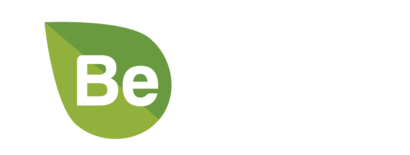Prior to the U.S. Civil War, native healers, midwives, herbalists and shamans—mostly women—were the primary caregivers. Their ‘drugs’ of choice came from leafy plants, flowers and roots. It was only with the introduction of synthetic, bio-chemical drugs, along with the ‘germ theory’ in the 1860s, that we started to rely on chemical compounds to ‘heal’ us.
It is interesting to note that the pharmaceutical industry often tries to isolate a single ‘active’ compound in a plant, creating it synthetically in a lab, without ever truly understanding how the multiple compounds of within plant work together synergistically to create healing in the body. Conversely, phytomedicinals, otherwise known as herbs, are usually comprised of the whole plant, or by making extracts, teas or tinctures that are not synthetic at all. The drugs that are synthesized in laboratories are not found in nature, and on a cellular level, are not recognized or utilized in the same way. This is why so many pharmaceutical drugs are rejected by the body, causing serious side effects, sometimes even death.
The Body’s Warning Signals
Moreover, Big Pharma pushes meds like opiates, for even minor pains, when these are usually signals from our bodies that we need to slow down, get more rest, attend to an emotional pain that has been ignored, or enlist some other holistic means to restore balance in an out-of-balance system. When these minor warning signals are ignored, and even squashed with opioid pain killers, the body has no choice but to scream more loudly for true healing. Thus our small ache or pain grows larger, sometimes manifesting into a full-fledged disease.
A million Americans are also severely injured annually by incorrect pharmaceutical prescriptions, yet many herbs that people take to cure ailments are completely benign, and can’t cause damage, since they work largely due to antioxidant and phytonutrient properties. Vitamin C, for example, is known to help shrink cancerous tumors, improve cellular functioning, and act as a support against innumerable infectious diseases, yet taking it will not cause harm to anyone.
However, there are herbal medicines that can kill you, like white snakeroot or a Doll’s Eye’s plant. Others can cause serious damage, but they are rarely ‘prescribed’ by a knowledgeable nutritionist, herbalist or natural healer.
Still yet, one quarter of lab-created drugs used in the U.S. are derived from plants (i.e., opiates, digitalis, Taxol) by withdrawing an active ingredient from the plant, and trying to replicate its structure.
Millions of Natural Ways to Fight Disease and Improve Health
Meanwhile, millions of herbs are used the world over every day to address health concerns, from the mild to the catastrophic.
There are approximately 75-100 kinds of herbs and flowers in the National Library of Medicine herb garden, but these are a tiny fraction of the total number of plants available to use for physical, emotional and physiological healing. From basil to wormwood, to allspice to ashwaganda, to olive oil and broccoli, some of the most healing herbs are already in our homes.
Nine Cultures that Use Natural Healing Instead of Big Pharma Meds
Though shocking to some, the western way of treating disease is not the only way.
- The Native Americans are famous for treating disease with natural remedies. More than 500 Indian tribes have contributed to herbal knowledge f
- or more remedies than you can shake a stick at. These have been proven to work for over a thousand years.
- Herbal remedies from the Middle East go back more than 3,000 years. This culture used a host of different plants to cure illnesses. Arab and Mediterranean people relied heavily on the bioactive ingredients of plants for healing.
- There are countless plants from the Aboriginal bush that have been used to save people from near death. From saps that were applied to the skin, and teas that were made from roots and leaves, they had hundreds of ways to cure the sick in ancient times, and they still do.
- In India, the ancient science of Ayurveda relies heavily on yoga, meditation and the use of plants for healing. Ayurvedic medicine has been around for at least 3,000 years, or likely longer, and it remains one of the primary forms of health care used on the continent.
- Shaman and healers from the Amazonian rainforest with ‘ethnobotany’ knowledge are often discounted, but they are a valuable asset to the world, since they know which plants heal, and how.
- The Mayans were master herbalists. Ix Chel is the Mayan Goddess of healing, and through her stories, cultural knowledge of how to heal with herbs has been passed down to Mayans for centuries.
- The Egyptians knew of countless herbal remedies, valuing plants so much that their Kings and Pharaohs were often buried with urns full of herbal tinctures.
- Throughout Asia—from Japan, to Korea, to Thailand, Laos, Burma, Cambodia and China—ancient herbal remedies were taught to deserving students. Herbs are always prescribed holistically, dependent upon an individual’s condition.
- African traditional healers used any number of plant-based concoctions to heal conditions as diverse as cancer, psychiatric disorders, asthma, venereal disease and even Ebola.
We all owe a tremendous debt to the biosphere. It has provided us with unspeakable healing for millennia. We haven’t always had to rely on synthetic, chemical ‘cures’ from companies who value money over true health. Plants are our true allies in healing.


